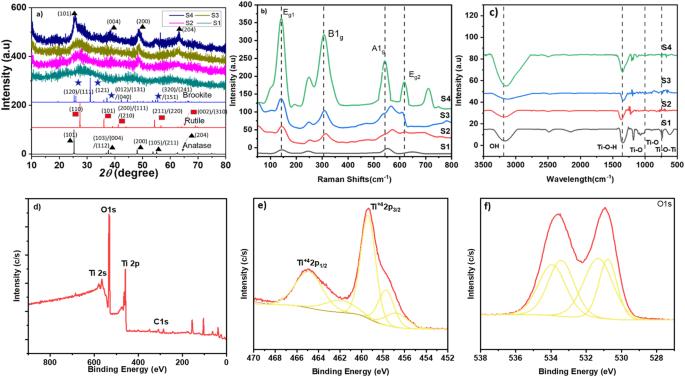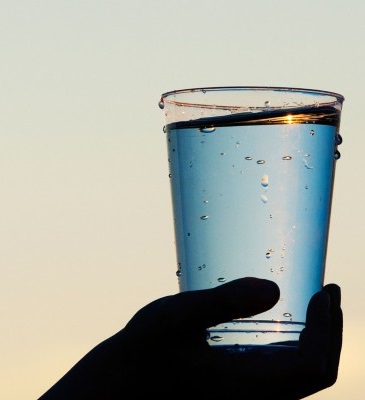气隙辅助溶热工艺合成用于 Na+ 电吸附/脱盐的前所未有的石墨烯状二维 TiO2 纳米片
IF 10.4
1区 工程技术
Q1 ENGINEERING, CHEMICAL
引用次数: 0
摘要
由于盐分去除和电荷存储能力较慢,设计高性能电容式去离子装置受到了限制。人们正在努力用先进的二维材料取代传统电极。我们介绍了一种通过独特的气隙辅助溶热法合成二维二氧化钛类石墨烯纳米片的简单方法。通过调节溶热反应器中的气隙,获得了质量前所未有的二维类石墨烯晶体锐钛矿二氧化钛片。与原始二氧化钛(249.5 m2/g)相比,通过气隙辅助溶热法合成的二维二氧化钛的比表面积高达 934.5 m2/g。这些薄片被用作离子电吸附的法拉第电极,其电容去离子能力也得到了评估。通过对 Na+ 离子迁移和储存的原位研究,对其电化学传导性进行了检测。二维二氧化钛片的吸附容量随着应用电位的升高而增加,同时吸附时间保持在 15 分钟不变。在-0.8 V、-1.0 V和-1.2 V的吸附电位下,脱盐率分别为2.09、2.18和2.20 mg g-1 min-1,吸附容量分别为31.33、32.73和33.023 mg g-1。二维 TiO2 电极表现出较高的电子转移率、较大的脱盐容量和较快的平均脱盐速率。二维层状二氧化钛电极的比容量约为 45.68 F g-1。这些结果可归因于较大的比表面积、较短的离子扩散路径、众多的活性吸附位点、表面缺陷和假电容。这种气隙辅助溶热法有望为合成高质量的二维材料开辟新的途径。本文章由计算机程序翻译,如有差异,请以英文原文为准。

Air-gap-assisted solvothermal process to synthesize unprecedented graphene-like two-dimensional TiO2 nanosheets for Na+ electrosorption/desalination
Designing a high-performance capacitive deionization setup is limited due to the slow salt removal and charge storage capacities. Efforts are being made to replace traditional electrodes with advanced 2D materials. We introduce a simple method for synthesizing two-dimensional titanium dioxide graphene-like nanosheets via a unique air-gap-assisted solvothermal method. Crystalline 2D graphene-like anatase-TiO2 sheets of unprecedented quality were obtained by tuning the air gap in the solvothermal reactor. The 2D TiO2 synthesized by air-gap-assisted solvothermal process has shown an exceptionally high surface area of 934.5 m2/g compared to the pristine TiO2 (249.5 m2/g). The sheets were used as Faradaic electrodes in ion-electrosorption and their capacitive deionization capabilities were evaluated. The electrochemical conductivity was examined via an in situ investigation of Na+-ion migration and storage. The adsorption capacity of 2D TiO2 sheets increased with higher applied potential while keeping the adsorption time constant at 15 min. At adsorption potentials of –0.8 V, –1.0 V, and –1.2 V, desalting rates of 2.09, 2.18, and 2.20 mg g−1 min−1 resulted in adsorption capacities of 31.33, 32.73, and 33.023 mg g–1, respectively. The 2D TiO2 electrode demonstrated high electron-transfer rates, a large desalination capacity, and a rapid average desalting rate. The specific capacity of the 2D-layered TiO2 electrode was found to be about 45.68 F g−1. These results can be attributed to the large specific surface area, short ionic diffusion paths, numerous active adsorption sites, surface defects, and pseudocapacitance. This air-gap-assisted solvothermal method is expected to open new avenues for the synthesis of high-quality 2D materials.
求助全文
通过发布文献求助,成功后即可免费获取论文全文。
去求助
来源期刊

npj Clean Water
Environmental Science-Water Science and Technology
CiteScore
15.30
自引率
2.60%
发文量
61
审稿时长
5 weeks
期刊介绍:
npj Clean Water publishes high-quality papers that report cutting-edge science, technology, applications, policies, and societal issues contributing to a more sustainable supply of clean water. The journal's publications may also support and accelerate the achievement of Sustainable Development Goal 6, which focuses on clean water and sanitation.
 求助内容:
求助内容: 应助结果提醒方式:
应助结果提醒方式:


